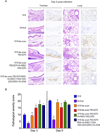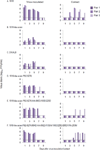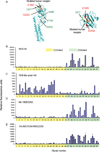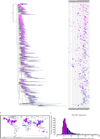Circulating avian influenza viruses closely related to the 1918 virus have pandemic potential
- PMID: 24922572
- PMCID: PMC4205238
- DOI: 10.1016/j.chom.2014.05.006
Circulating avian influenza viruses closely related to the 1918 virus have pandemic potential
Abstract
Wild birds harbor a large gene pool of influenza A viruses that have the potential to cause influenza pandemics. Foreseeing and understanding this potential is important for effective surveillance. Our phylogenetic and geographic analyses revealed the global prevalence of avian influenza virus genes whose proteins differ only a few amino acids from the 1918 pandemic influenza virus, suggesting that 1918-like pandemic viruses may emerge in the future. To assess this risk, we generated and characterized a virus composed of avian influenza viral segments with high homology to the 1918 virus. This virus exhibited pathogenicity in mice and ferrets higher than that in an authentic avian influenza virus. Further, acquisition of seven amino acid substitutions in the viral polymerases and the hemagglutinin surface glycoprotein conferred respiratory droplet transmission to the 1918-like avian virus in ferrets, demonstrating that contemporary avian influenza viruses with 1918 virus-like proteins may have pandemic potential.
Copyright © 2014 Elsevier Inc. All rights reserved.
Figures





Comment in
-
Influenza viruses en route from birds to man.Cell Host Microbe. 2014 Jun 11;15(6):653-4. doi: 10.1016/j.chom.2014.05.019. Cell Host Microbe. 2014. PMID: 24922565
References
-
- Beare AS, Webster RG. Replication of avian influenza viruses in humans. Arch Virol. 1991;119:37–42. - PubMed
Publication types
MeSH terms
Substances
Grants and funding
LinkOut - more resources
Full Text Sources
Other Literature Sources
Medical

